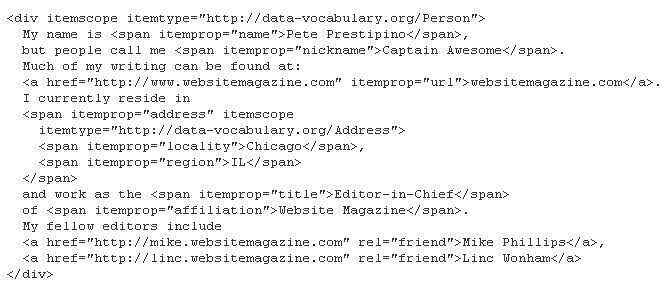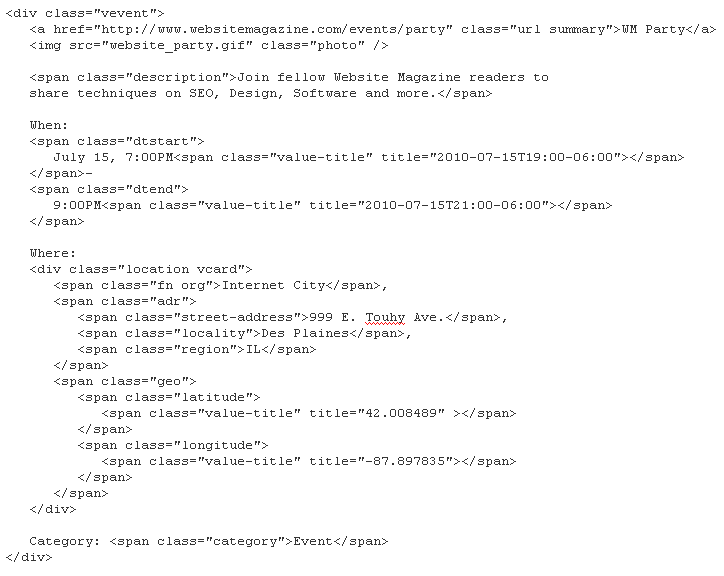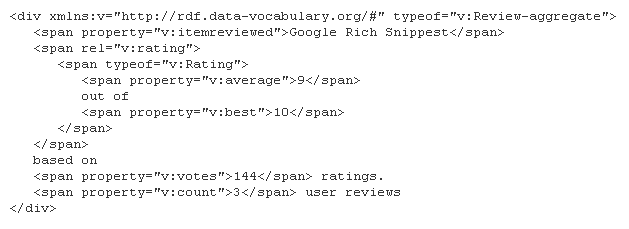Microformats, Microdata and RDFa for Rich Snippets

In order to display Rich Snippets Google first need to find content in one of several specific markup formats (microformats, microdata and RDFa). Information can be actually be structured quite easily and added to most Web pages quickly. In some cases, it is as simple as wrapping the existing data on your pages with a few additional tags. Below you will find some general explanation of each of the markup formats and some sample code below. While we've only shown one markup format for each type of snippet you should be able to get a good idea of the subtle differences between the formats. Website Magazine's recommendation is to use the HTML5 microdata specification but the other formats are perfectly acceptable to use on your Web property.
Microdata Markup Format for People
The HTML5 microdata specification is a simple way to label content that describes a specific type of information-for example, information related to people. Each information contact type can have different properties including title, address, photo, name, etc.. Microdata uses simple attributes in HTML tags (often < span > or < div >) to assign the information to items and properties. Below is an example of the microdata markup format for people:

Microformats Markup Format for Events
Microformats, also known as entities, are simple conventions used on web pages to describe a specific type of information -for example, an event. Each entity has its own properties. For example, an event has a summary, a location and a start and end date. Microformats use the class attribute in HTML tags (often
< span > or < div >) to assign information to entities and their properties. Below is an example of the microformat markup format for an (imaginary) event.

RDFa Markup Format for Reviews
RDFa is perhaps the simplest way to label content to describe information, particularly for that of reviews. The information types in RDFa are called entities and each entity has a number of properties. For example, a review has properties such as the name of the item being reviewed, the rating, reviews, data and summary. Again, RDFa is perhaps the simplest to master, using simple attributes in XHTML tags (often
< span > or < div >) to assign information to entities and properties. Below is an example of the RDFa markup format for a review:


Subscribe to Our Newsletter!
Latest in Marketing








